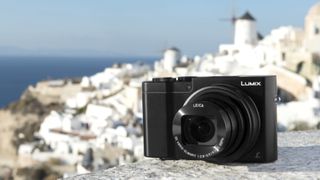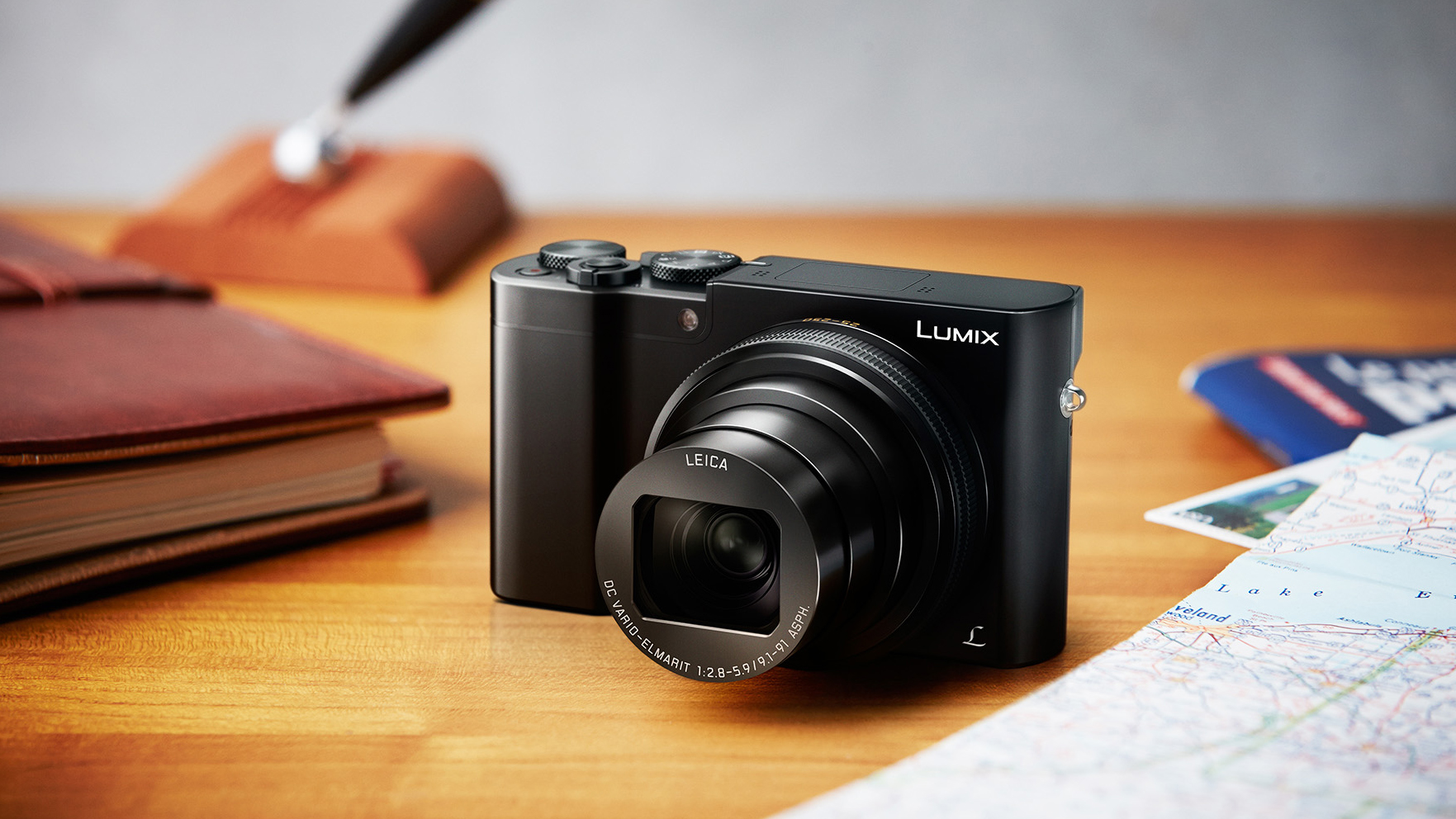Why you can trust TechRadar
Build and handling
- Solid metal construction
- Black and Silver and Black finishes
- Weighs 310g
One of the most exciting aspects of the ZS100 / TZ100 is that it's not a great deal bigger than the ZS60 / TZ80 announced at the same time. It's about 6mm (0.236 inches) thicker than the ZS60, plus 2.2mm (0.0866 inches) longer and 0.5mm (0.0197 inches) wider. That makes it just about small enough to slip in a jeans pocket and it has a metal body shell that feels solid enough to suggest it would survive being carried in that way over a long period of time.
The ZS100 looks fairly similar to the LX100, Panasonic's other current premium compact. It has fairly clean lines, along with a step in the top-plate. The camera will be available in black, or black and silver finishes, with the black and silver version having a red band around the small silver portion of the top-plate. This is a new styling for Panasonic, so it will be interesting to see if this appears elsewhere in the future.
On the front of the camera there's no texture or grip, but there's an indent which helps the camera to sit nicely in your hand. Nevertheless, it makes sense to attach the wrist strap to give an extra degree of security.




Almost all of the ZS100's buttons are grouped towards the right hand side of the camera, making it easy to use one-handed. On top of the camera are two large dials. One is an exposure mode dial which means you can quickly switch between shooting modes (there's a collection of automated and scene modes, along with more advanced program, aperture priority, shutter priority and manual options).
The second dial controls different functions depending on the shooting mode you're in. If you're working in aperture priority, you can use it to alter aperture, or shutter speed if in shutter priority. It's in a convenient position for your thumb and has a satisfying amount of stiffness when you turn it.
There's also a ring around the camera's lens which, again, has a different default function depending on the shooting mode. Both this and the dial on top of the camera can be customised to change something else if you prefer. There are also a further four function buttons (marked Fn), which each have default functions, but can be changed to suit a different purpose if you wish. There are five more "virtual" function buttons, which are accessed via the touchscreen and are also customisable.
The (physical) Fn3 button accesses the ZS100 / TZ100's quick menu by default. You can use this menu to move quickly between common settings, such as ISO, metering and white balance. By default, two of the function buttons are used to access the camera's 4K photo modes.
The ZS100's electronic viewfinder is ready for action at any time that the camera is powered up and it doesn't need to be popped out for use
Unlike the electronic viewfinder in Sony's popular RX100 III and RX100 IV compact cameras with 1-inch type sensors, the ZS100's electronic viewfinder is ready for action at any time that the camera is powered up and it doesn't need to be popped out for use. Furthermore, there's a sensor which automatically detects when the camera has been lifted to your eye to switch on the viewfinder, and switch the screen off. Although undoubtedly useful and a bonus on a pocketable compact camera, the ZS100's viewfinder is small, and while the image is clear and sharp, because of its small size it's unlikely you'll want to use the viewfinder for every shot.

The ZS100 / TZ100's screen is touch-sensitive, which means you can use it to set the focus point, simply tapping an area on the screen you want to use (if you have 1-Area focusing selected). You can also use it to navigate through and around the main menu and the function menu. If you don't like using touch screens, the good news is that everything can also be controlled by a physical button, or a combination of buttons, if you prefer.
In order to use the super fast shutter speeds that the electronic shutter facilitates, you'll need to change from mechanical shutter in the camera's main menu. Once you've done this, you can move past the 1/2000 fastest shutter speed offered by the mechanical shutter and reach speeds up to 1/16000.
Autofocus
- 49-point AF
- Face/Eye detection
- Post-focus function
Lumix cameras have always delivered the goods when it comes to AF speed, and the ZS100 / TZ100 is no different - in good light you can expect the camera to lock-on quickly with almost no delay.
Even when the light levels drop, the ZS100 performs very well, though the contrast-detect AF will start to struggle when light levels are really poor - but that's to be expected.
Current page: Build, handling and AF
Prev Page Introduction and key features Next Page Performance and image qualityAmy has been writing about cameras, photography and associated tech since 2009. Amy was once part of the photography testing team for Future Publishing working across TechRadar, Digital Camera, PhotoPlus, N Photo and Photography Week. For her photography, she has won awards and has been exhibited. She often partakes in unusual projects - including one intense year where she used a different camera every single day. Amy is currently the Features Editor at Amateur Photographer magazine, and in her increasingly little spare time works across a number of high-profile publications including Wired, Stuff, Digital Camera World, Expert Reviews, and just a little off-tangent, PetsRadar.
